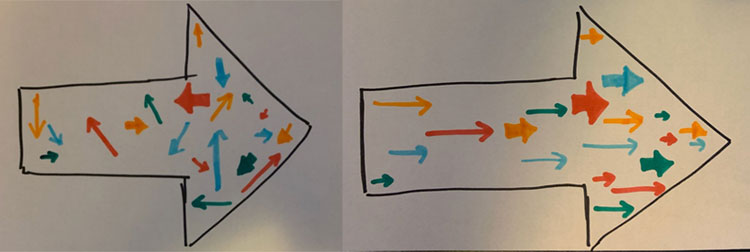
Does your company have a culture? Yes.
The question we all should be asking ourselves is: “Does our company have a good or strong culture?” That’s the most important question.
According to the book The Culture Code, detailing research done by Harvard, where they studied more than 200 companies, they found that “a strong culture increases net income 756 percent over eleven years.”
Every company, business, team, program in the world has a culture. The issue is that not many know our cultures exist. It’s the responsibility of your leader within the company, whether he/she is CREATING or ALLOWING culture to happen.
What is Culture?
The first thing we must do is define what the word ‘culture’ means. According to Merriam-Webster, culture can be defined as:
Once you take out all the ‘fluff’ words, you can say that culture is simply “a set of beliefs that drive behavior.”
The culture within a company drives the behavior to succeed or fail – to grow or diminish. This may be confusing to some, as culture is NOT a mission statement that’s usually painted on a wall or on a banner in the office. It’s not a motivational sign in a locker room of a sports team. Culture is created and lived out by the people’s behavior within the company.

(no making fun of my artistic ability…)
Are you ‘Directionally Aligned’?
When I work with businesses and teams, I give them this example:
This is a great example of two different types of culture. The leader of each wants the company to succeed, which is indicated by the large, outlined, black arrows. The black arrow is pointing in the direction that the leader wants the company to move towards because, obviously, everyone wants to succeed. Each of the smaller, different sizes, widths, and colors, indicate the individuals working within the company. The age, shape, ethnicity, or gender of the people within the company doesn’t matter. The ONLY thing that matters is if the culture of the company is DIRECTIONALLY ALLIGNED with each other.

The leader of each company must understand that both of these companies take a lot of work to manage and lead. Both expend a lot of energy, time, and commitment. But only one will succeed. Leaders must ask themselves:
How do you measure culture?
When I work with businesses and sports teams, I categorize their culture into ‘The 3 P’s.’ What does your company PRACTICE? What does your company PROMOTE? What does your company PERMIT? Within these 3 P’s (practice, promote, permit), you’ll be able to spotlight the strength (or lack thereof) of the behavior within a company.
Culture Blueprint
So now what? How do we develop a great, successful culture? Understand that there are four stages to focus on: Leader(s), Culture, Behavior, Results. The Leader(s) build the Culture. The Culture drives Behavior within the company. The Behavior of the people produce the Results.
LEADERS -> CULTURE -> BEHAVIOR -> RESULTS
To get the results you want, you must read this from right to left. Reverse engineer this method. It would go something like this: “To get ______ Results (fill in the blank) I want, I must have _____ Behavior (fill in the blank) within the company. To have ______ Behavior (fill in the blank), the Culture must look like _____ (fill in the blank) within the company. To get ______ Culture (fill in the blank), the Leaders must do _____ (fill in the blank) within the company.”
Culture is a tricky and multifaceted word. The more that a leader understands that culture is a set of beliefs that drive the behavior, the better off they’ll be and the more they’ll succeed. Culture drives the set of beliefs, which drives the results!
“Culture eats strategy for lunch.” – Peter Drucker
Jeff Becker
WHEN CAREER ADVISOR